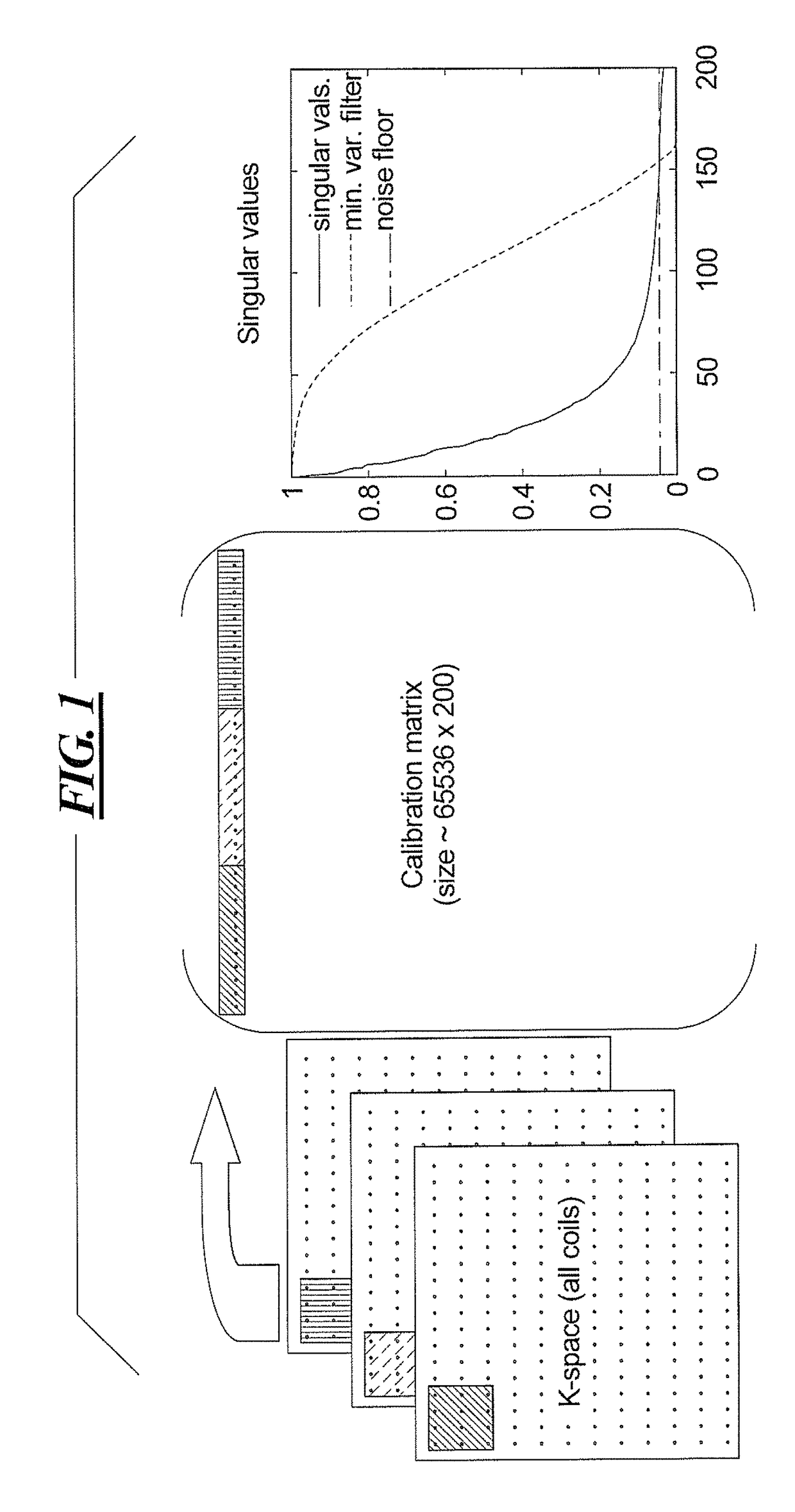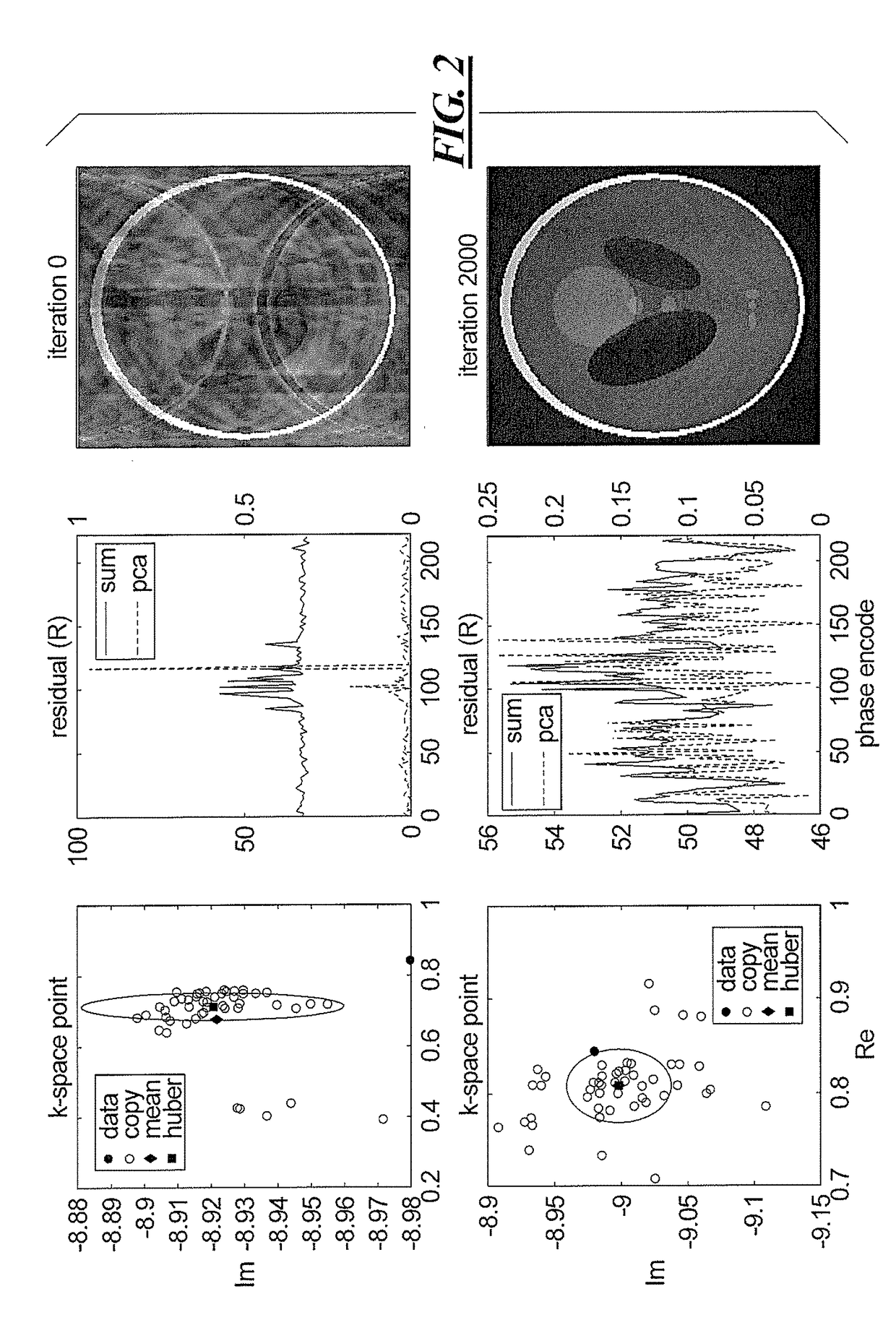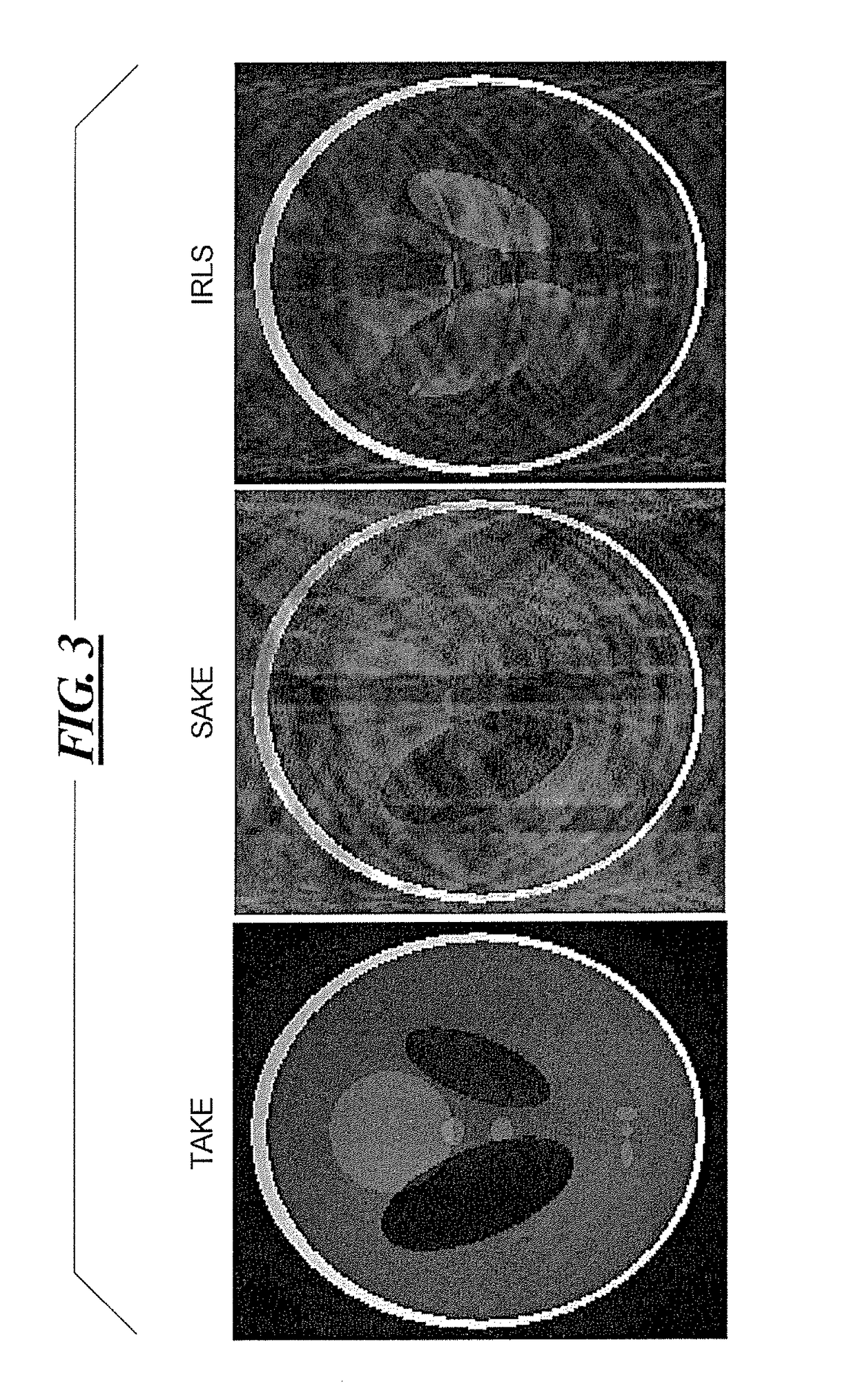Method and magnetic resonance apparatus for image reconstruction with trimmed autocalibrating k-space estimation based on structured matrix completion
- Summary
- Abstract
- Description
- Claims
- Application Information
AI Technical Summary
Benefits of technology
Problems solved by technology
Method used
Image
Examples
Embodiment Construction
[0034]In contrast to virtually every other parallel imaging method, SAKE uses all of the acquired data for calibration rather than a subset of contiguous data at the center of k-space. It does this by constructing a large calibration matrix with zeros inserted in the entries where data are missing. Starting from this (incomplete) matrix, a structured low-rank matrix approximation technique is employed to fill in the gaps (complete the matrix). Over the course of many iterations of projection onto convex sets (POCS), the zeros are replaced with values that cause the calibration matrix to have both Hankel structure (corresponding to convolution with a locally defined kernel) and low rank.
[0035]Fundamentally the method works because the zeros are incompatible with low rank. In much the same way, motion corrupted data are also incompatible with low rank. If the corrupted data are removed from the dataset, then the problem simplifies to SAKE with fewer data points. On its own, however, S...
PUM
 Login to View More
Login to View More Abstract
Description
Claims
Application Information
 Login to View More
Login to View More - R&D
- Intellectual Property
- Life Sciences
- Materials
- Tech Scout
- Unparalleled Data Quality
- Higher Quality Content
- 60% Fewer Hallucinations
Browse by: Latest US Patents, China's latest patents, Technical Efficacy Thesaurus, Application Domain, Technology Topic, Popular Technical Reports.
© 2025 PatSnap. All rights reserved.Legal|Privacy policy|Modern Slavery Act Transparency Statement|Sitemap|About US| Contact US: help@patsnap.com



